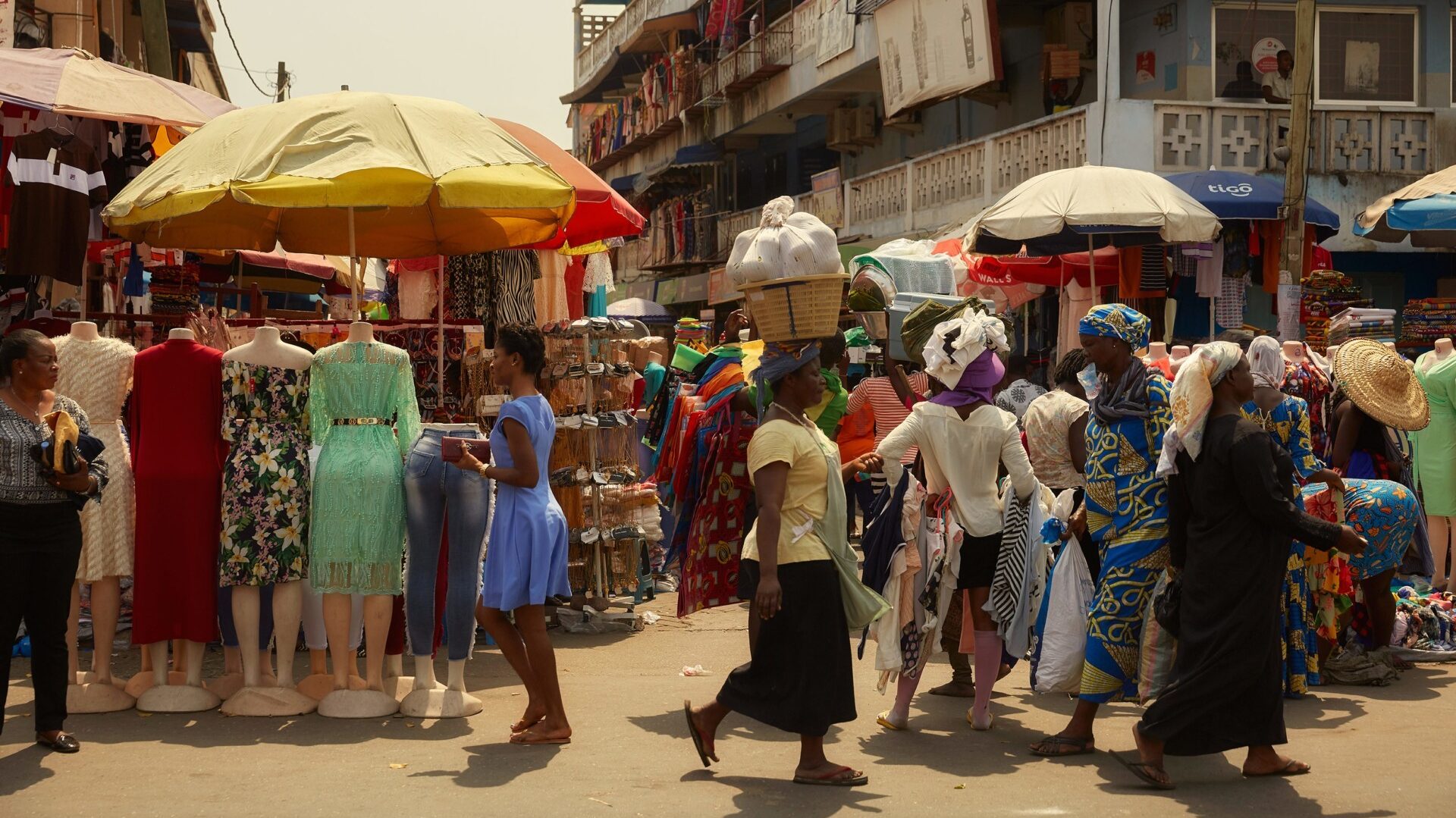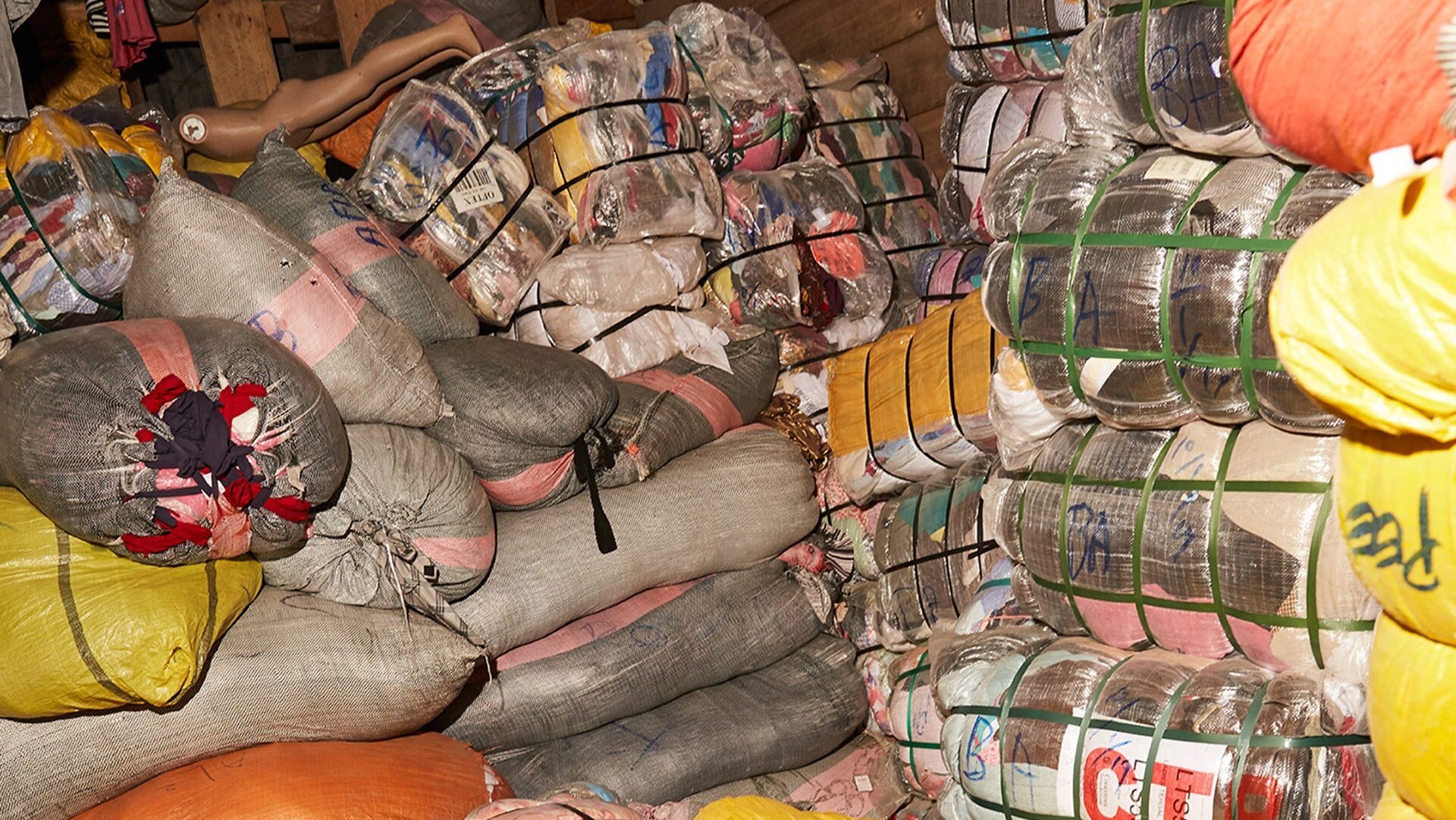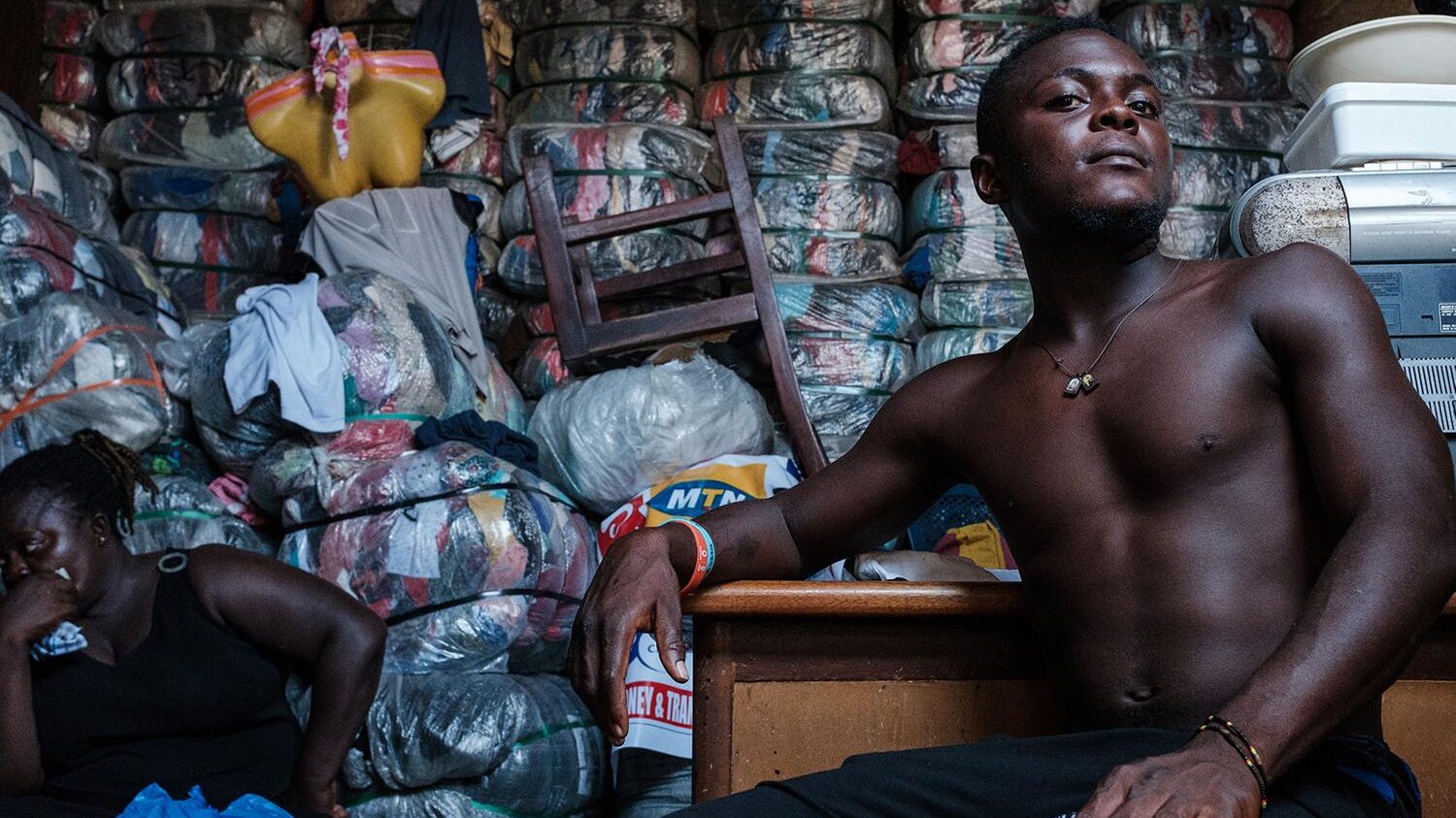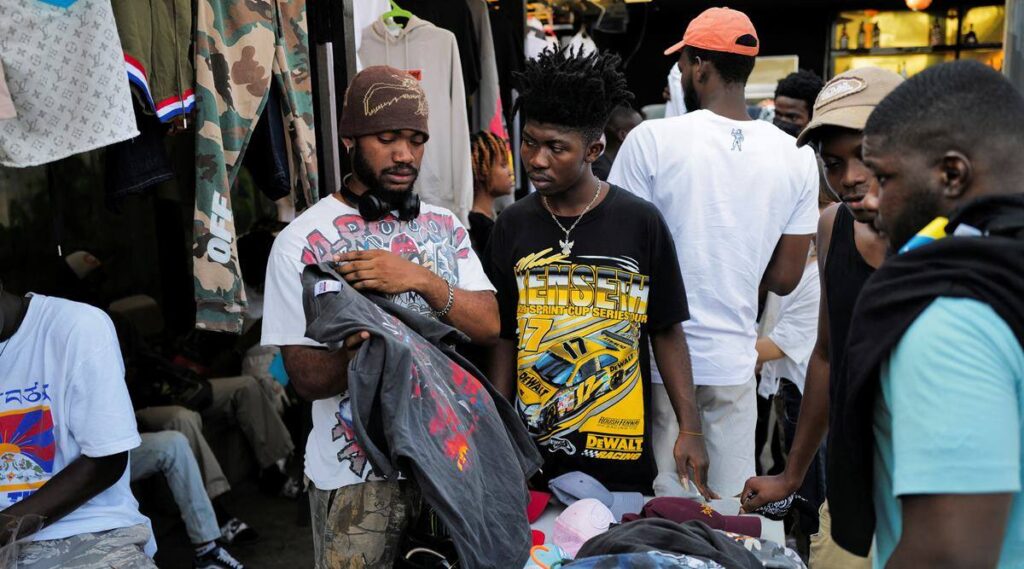I remember my auntie coming home with clothes that she had bought from the local market. Proudly showing it off, her new finds were colourful graphic t-shirts and a pair of washed denims that still looked crisp. I can still remember the green Power Rangers t-shirt as if it were yesterday. I knew it was “foose”, and I couldn’t help but put them on, not wondering about the stories behind these “Dead Whiteman’s Clothes” and how they had made their way to our remote corner of the world.

“Obroni Wawu” translates to “Dead Whiteman’s Clothes” in the local language, and it’s a term commonly used to refer to second-hand clothing imported from Western countries. The phrase carried a sense of mystery and curiosity, as we often wondered about the previous owners and the journeys these clothes had taken before reaching us.

The lifecycle of second-hand clothes is a complex journey that often begins in retail stores, where these garments are initially sold as new, purchased, worn a few times, and sometimes kept in storage before being donated to charitable organisations. These donations serve as a vital link in the chain as charities sort through the incoming items, assessing their condition and suitability for donation.

Garments deemed unworthy of donation are then redirected towards another path in their lifecycle. These unwanted clothing items are sold to exporters, who play a crucial role in the global second-hand clothing trade. The garments are meticulously packed into tight bales, with each bale containing around 200 assorted pieces of clothing. These tightly packed bales embark on a journey, often spanning continents, until they reach destinations like Accra (Kantamanto), where they find new owners.

In Kantamanto, these bales filled with previously owned clothing are distributed to various markets and vendors. It’s here that the average person gets their chance to access these second-hand garments. Whether it’s been brought to your doorstep by hawkers or you stumble upon them while in town or on a spree at your regular “Bend Down Boutique,” From trendy vintage pieces to everyday essentials, there is something for everyone’s taste and budget.

There is a growing community of individuals who have developed a deep affection for wearing “foose,” which is a term often used to describe vintage or thrifted clothing items. Represents a unique fashion subculture that celebrates individuality and sustainability. It has given rise to a thriving business ecosystem, providing opportunities for people to sell thrifted and vintage items. This passion has fostered a thriving business environment, allowing individuals to share their curated thrifted finds with like-minded fashion admirers while reducing the environmental impact of fast fashion.

So the next time you’re looking to add some unique pieces to your wardrobe, consider exploring the world of thrifting and vintage fashion. Not only will you be able to express your individual style, but you’ll also be contributing to a more sustainable fashion industry.


